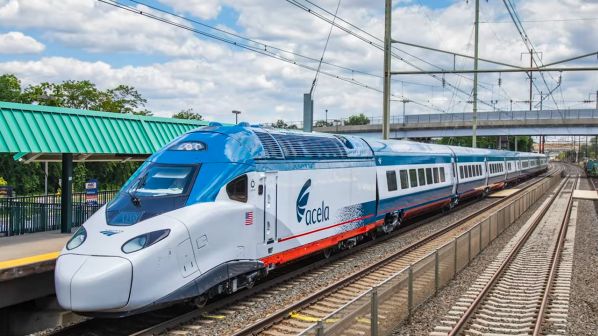AMTRAK has confirmed that the introduction of its new high-speed Acela fleet built by Alstom has been delayed from autumn this year to early spring 2022, due to technical glitches and Covid-19 related supply chain problems.
“The schedule has been slightly impacted, due to Covid-19 and additional testing,” says Amtrak director, media relations and business communications, Ms Christina Leeds. “Due to minor design modifications implemented post-initial-static-testing, we performed a second round of static testing.”
Amtrak awarded Alstom a contract in August 2016 to supply 28 trains to replace the existing fleet of 20 Acela Express push-pull sets operating on the 730km Boston - New York - Washington DC Northeast Corridor NEC.
The Alstom Avelia Liberty trains are formed of two compact power cars and nine articulated intermediate trailer coaches. The trains have a design speed of 300km/h but will be limited to a maximum of 257km/h on the NEC.
During static testing some modifications to allow the trains to better handle curves were identified, with another round of stationary testing to identify additional needed characteristics taking place. This included adding mass to the extremity ends of each car, and additional anti-roll bars to the key car and café car. “These were added to lower the centre of gravity over specific wheels, and to distribute load on wheels in curves,” Amtrak says.
A first stage of speed testing undertaken last year was successful, but some control systems needed to be tuned to allow them to comply with the Northeast Corridor (NEC) track and catenary system. A second stage of speed testing will be performed this year to certify the train at a higher and final safe revenue speed. Amtrak says Covid-19 has also presented challenges that required technical collaboration solutions.
The NEC is fitted with two types of catenary: a constant-tension system is installed on the New Haven - Boston section, while a variable-tension system is installed south of New Haven. Amtrak says that two different control systems are installed on the train to allow the pantograph to respond to both types of catenary, and the varying heights on the south end to accommodate freight traffic. Aerodynamics were also developed, with a pair of foils installed that provide similar lift, regardless of leading or trailing configuration, and at varying heights. The control system senses overhead voltage, and one of two discrete parameter sets are used to control the pantograph response.
There were also issues with the material supply chain, with state and federal guidelines in some cases resulting in either the temporary cessation of production, or reduced headcount production, until additional guidance could be provided.
“There have been no safety concerns,” Leeds says. “Test activities are closely monitored, and test team briefs follow and precede each test to ensure that all test activities are performed safely.”

